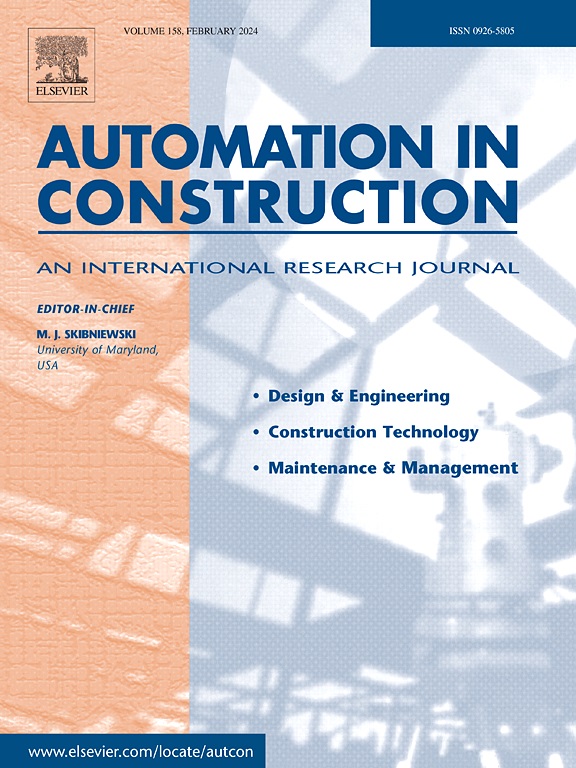基于多目标优化算法的预制建筑工艺调度
IF 9.6
1区 工程技术
Q1 CONSTRUCTION & BUILDING TECHNOLOGY
引用次数: 0
摘要
预制建筑已成为建筑业发展中一个日益重要的重点领域。在项目实施阶段,如何确定最优的施工过程调度方案是一个亟待解决的难题。本文提出了一个目标函数为总施工时间最小化和协调调度系数最大化的多目标优化问题,并提出了一种基于亚种分化策略的非支配排序遗传算法(SD-NSGA)来解决该问题。该算法将传统遗传算法(GA)中个体层面的竞争现象扩展到子种群层面。结果表明,SD-NSGA 表现出卓越的优化能力。与实际住宅建筑项目的初始方案相比,总工作时间缩短了 35.49%,综合调度系数提高了 365.79%。因此,所提出的算法可为实际工程项目中确定调度计划提供有价值的参考1。本文章由计算机程序翻译,如有差异,请以英文原文为准。
Process scheduling for prefabricated construction based on multi-objective optimization algorithm
Prefabricated construction has become an increasingly important focus area in the development of the construction industry. Determining an optimal construction process scheduling program is an urgent challenge during the project execution stage. This paper presents a multi-objective optimization problem with the objective function of minimizing the total construction time and maximizing the coordinated scheduling coefficient, and proposes a non-dominated sorting genetic algorithm based on the subspecies differentiation strategy (SD-NSGA) to solve the problem. The algorithm extends the competition phenomenon at the individual level to the subpopulation level in the traditional genetic algorithm (GA). The results demonstrate that SD-NSGA exhibits superior optimization capabilities. Compared with the initial scheme of a real residential construction project, the total working time is shortened by 35.49% and the integrated dispatch factor is increased by 365.79%. Therefore, the proposed algorithm can offer a valuable reference for determining scheduling plans in practical engineering projects.1
求助全文
通过发布文献求助,成功后即可免费获取论文全文。
去求助
来源期刊

Automation in Construction
工程技术-工程:土木
CiteScore
19.20
自引率
16.50%
发文量
563
审稿时长
8.5 months
期刊介绍:
Automation in Construction is an international journal that focuses on publishing original research papers related to the use of Information Technologies in various aspects of the construction industry. The journal covers topics such as design, engineering, construction technologies, and the maintenance and management of constructed facilities.
The scope of Automation in Construction is extensive and covers all stages of the construction life cycle. This includes initial planning and design, construction of the facility, operation and maintenance, as well as the eventual dismantling and recycling of buildings and engineering structures.
 求助内容:
求助内容: 应助结果提醒方式:
应助结果提醒方式:


